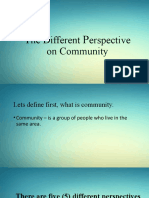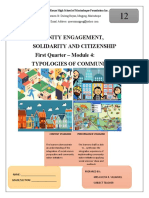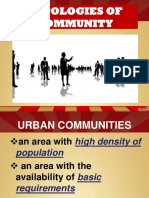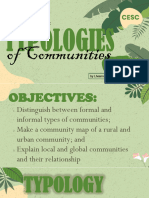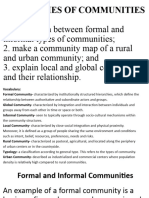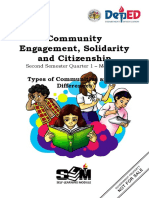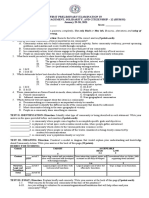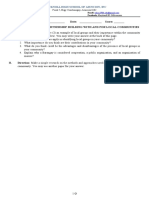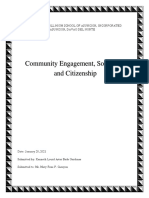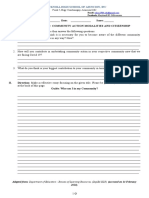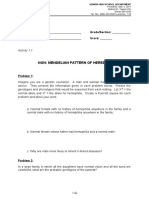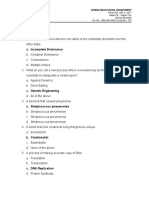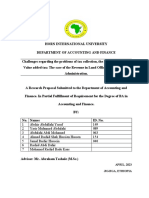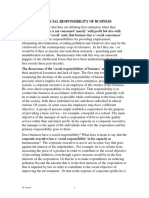0% found this document useful (0 votes)
155 views45 pagesTypes of Communities
There are several types of communities described in the document, including formal communities like co-ops and religious groups, informal communities based on interests, urban communities characterized by diversity and technology, and rural communities focused on subsistence. Global communities connect people internationally, while sectoral communities involve non-profits. Social space communities are based on physical or online gathering places. Formal communities engage in joint activities, while informal communities rely on personal networks.
Uploaded by
Mary-Rose CasuyonCopyright
© © All Rights Reserved
We take content rights seriously. If you suspect this is your content, claim it here.
Available Formats
Download as PDF, TXT or read online on Scribd
0% found this document useful (0 votes)
155 views45 pagesTypes of Communities
There are several types of communities described in the document, including formal communities like co-ops and religious groups, informal communities based on interests, urban communities characterized by diversity and technology, and rural communities focused on subsistence. Global communities connect people internationally, while sectoral communities involve non-profits. Social space communities are based on physical or online gathering places. Formal communities engage in joint activities, while informal communities rely on personal networks.
Uploaded by
Mary-Rose CasuyonCopyright
© © All Rights Reserved
We take content rights seriously. If you suspect this is your content, claim it here.
Available Formats
Download as PDF, TXT or read online on Scribd
/ 45





